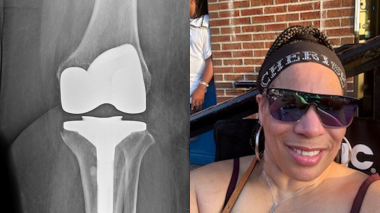 “Superfood” has become a trendy term to describe a certain group of foods that pack a powerful nutritional punch. These foods include nuts, fruits, vegetables, fish and dairy products, and have high amounts of antioxidants, vitamins and nutrients. For those at risk for Type 2 diabetes, superfoods can not only satisfy taste buds, but help reverse the risk.
“Superfood” has become a trendy term to describe a certain group of foods that pack a powerful nutritional punch. These foods include nuts, fruits, vegetables, fish and dairy products, and have high amounts of antioxidants, vitamins and nutrients. For those at risk for Type 2 diabetes, superfoods can not only satisfy taste buds, but help reverse the risk.
According to the American Diabetes Association, diabetes superfoods have a low glycemic index (or GI), which means they raise blood sugar levels less than foods with a high GI. These foods also provide key nutrients, such as calcium, potassium, fiber, magnesium, and vitamins A, C and E.
Of course, as with any food we consume, portion control is important. With that in mind, here are seven superfoods that push back against diabetes:
- Beans: High in protein, fiber, magnesium and potassium, beans provide a nutritional punch. Kidney, navy, pinto and black beans are popular versions, but be sure to drain and rinse canned varieties to reduce added salt.
- Citrus Fruit: Citrus fruits, such as grapefruit, oranges, clementines and tangerines, not only provide vitamin C, but are bursting with soluble fiber.
- Whole Grains: Barley, oatmeal and whole wheat are whole grains, which help metabolize fats with their high levels of fiber and antioxidants.
- Berries: Not only are they delicious, but berries of all types – including blueberries, strawberries, raspberries and blackberries – have anti-inflammatory properties. They’re also packed with antioxidants, vitamins and fiber.
- Nuts and Seeds: Many nuts and seeds contain healthy fats and can curb hunger, but a particularly powerful pair are walnuts and flax seeds, which pack in magnesium, fiber and omega-3 fatty acids. Nuts, including cashews and peanuts, typically have very low GI scores.
- Fat-free Milk and Yogurt: These dairy choices have low GI scores and contain plenty of vitamin D, a vital nutrient for good health. In one study, dairy intake was linked with a 9 percent lower risk for Type 2 diabetes.
- Salmon: Aim to eat wild salmon, and don’t bread or deep-fry it, for maximum benefit from this fish. It’s loaded with omega-3 fatty acids, vitamin D and selenium. Other fish containing omega-3 fatty acids are also beneficial, including herring, sardines and mackerel.



